Central Illinois History In early August we flew to Chicago. We arrived a few days early for a meeting in Rockford, so we could visit family and do a little family history exploration. I (Annette) have ancestors who lived in the Farmington, Illinois area west of Peoria and at Cambridge, north of Galesburg. These family members were abolitionists involved in the Underground Railroad movement during the early and mid 1800s. We were seeking additional information about these family members and their experiences. |
Farmington, Illinois After arriving at the airport, we drove to Peoria and spent the night. The next morning we headed to Trivoli Township and Farmington. Armed with printouts of historic maps supplied by Annette's mother, we found a stone school marked on the map in Trivoli Township. A little farther down the road we spotted Annette's great, great, great, great grandfather's big old stone house. This house was built near the site of the original log home constructed by Eli Wilson and his family when they arrived from New York in 1834.
We stopped to check that we'd found the correct house and had a nice conversation with the current land owner, Dale Peterson. The photo below shows the Wilson house as it appeared in the late 1880s. This photo is from the Illinois Liberty Lines by Delores Saunders (1982) that is now out of print.
He indicated that the attic was slopped, so the original roof was thatched. He also told us that the porch was added in the 1880s and the kitchen in the back was added in the 1960s.
James Wickwire was the son-in-law of Eli Wilson. We thought it was interesting that the current owner's wife is a "Wickwire" which means that the house was still in the family. Down the road to the west we found the original James Wickwire home (below).
Both homes were stations on the underground railroad. While the Wilson home has no visible sign of its past station service, the Wickwire home was built with hidden rooms and passageways behind the closets.
Below is a photo of the Wilson home from a distance across a field. |
 |
We spent some time at the Farmington public library photocopying interesting local history materials. Our next stop was at the cemetery to visit the graves of the Wilsons (tall right) and Wickwires (left). Since this visit, we've found out that we're related to many of the other families in local community including Luther Birge who was also involved with the Underground Railroad in the area. |
Bishop Hill Later in the day, we drove north through the country toward the Bishop Hill Historical Site. This utopian society was active during the time that my great, great, great grandfather lived in the Henry County. Having lived near the New Harmony area in southern Indiana, we were both interested in this type of colony life. In 1846, Swedish followers of Eric Janson arrived in this area and built the community. Although their leader was murdered in 1850, their community continued until 1861. Below is the Administration Building (below). We watched a short video at the Bishop Hill museum and enjoyed the paintings of Olof Krans, a well-known folk artist who lived in the colony. We arrived near the end of the day, so many of the buildings were closing. While Annette bought bread and cookies at the bakery, Larry photographed the downtown area. We had to choose one historic building tour, so we stopped at the Colony Hotel. A knowledgeable retired school teacher provided an excellent overview of the building and community.
On the way out of town the drove past the other buildings and decided that we'd have to return another time.
|
Although it was getting late in the day, we decided to spend a few minutes trying to find the cemetery north of Cambridge. Now named the Munson Township Cemetery Prairie Nature Preserve, George FH Wilson (my GGG grandfather) donated the land in the late 1800s for the cemetery. This interesting country graveyard is part of a nature project to restore the native prairie grasses, so the graves were a little difficult to locate. The area was filled with beautiful wildflowers and butterflies. Although we wanted to spend more time, we needed to travel on to Springfield for the night. |
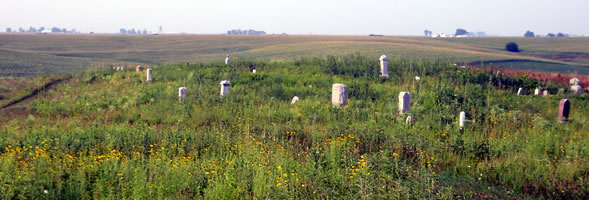 |
Springfield We spent a day and a half in Springfield exploring the local historical society and library resources. We were most successful at the newspaper section of the new Abraham Lincoln Presidential Library as well as the Illinois State Library. While Annette searched the Western Citizen, an abolitionist newspaper from the mid 1800s, Larry explored the early newspapers from Findlay, Illinois. Annette was particularly excited to find the series of articles that involved Eli Wilson's involvement in a well-known underground railroad event. She was also excited to learn that both Eli and George Wilson ran for public office. They were also listed as involved in the local abolitionist group. We brought along our computer and scanner to assist in our collection of data. |
Go to Lamb & Johnson Menu
|


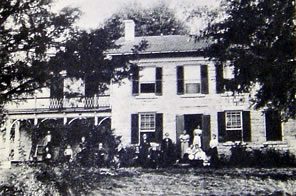
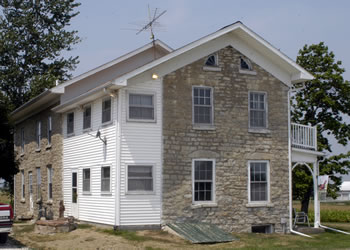
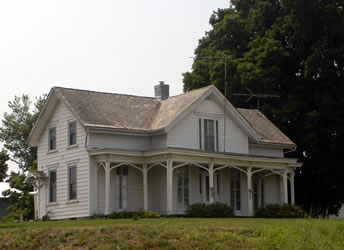
 Peterson encouraged us to explore the property. He directed us to a small pioneer cemetery located east of the house along the road. Most of the grave markers are gone. We found one stone marker leaning against a tree.
Peterson encouraged us to explore the property. He directed us to a small pioneer cemetery located east of the house along the road. Most of the grave markers are gone. We found one stone marker leaning against a tree. 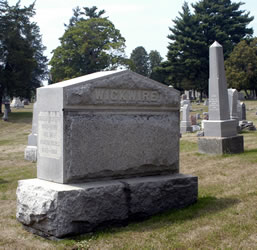 Farmington
Farmington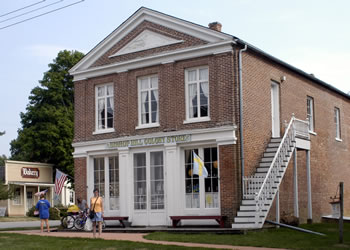
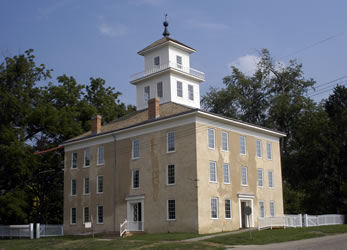
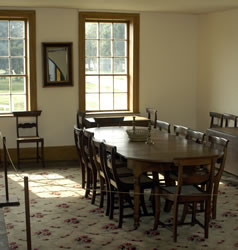
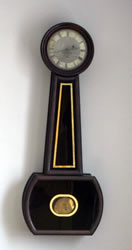
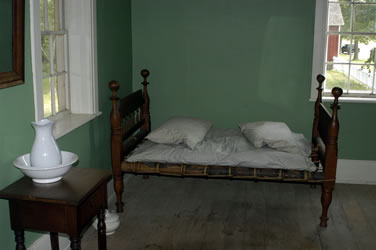
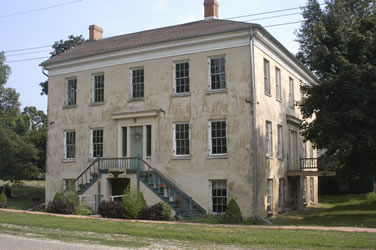
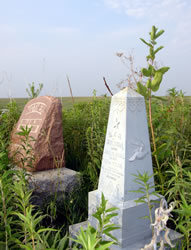 Henry County
Henry County